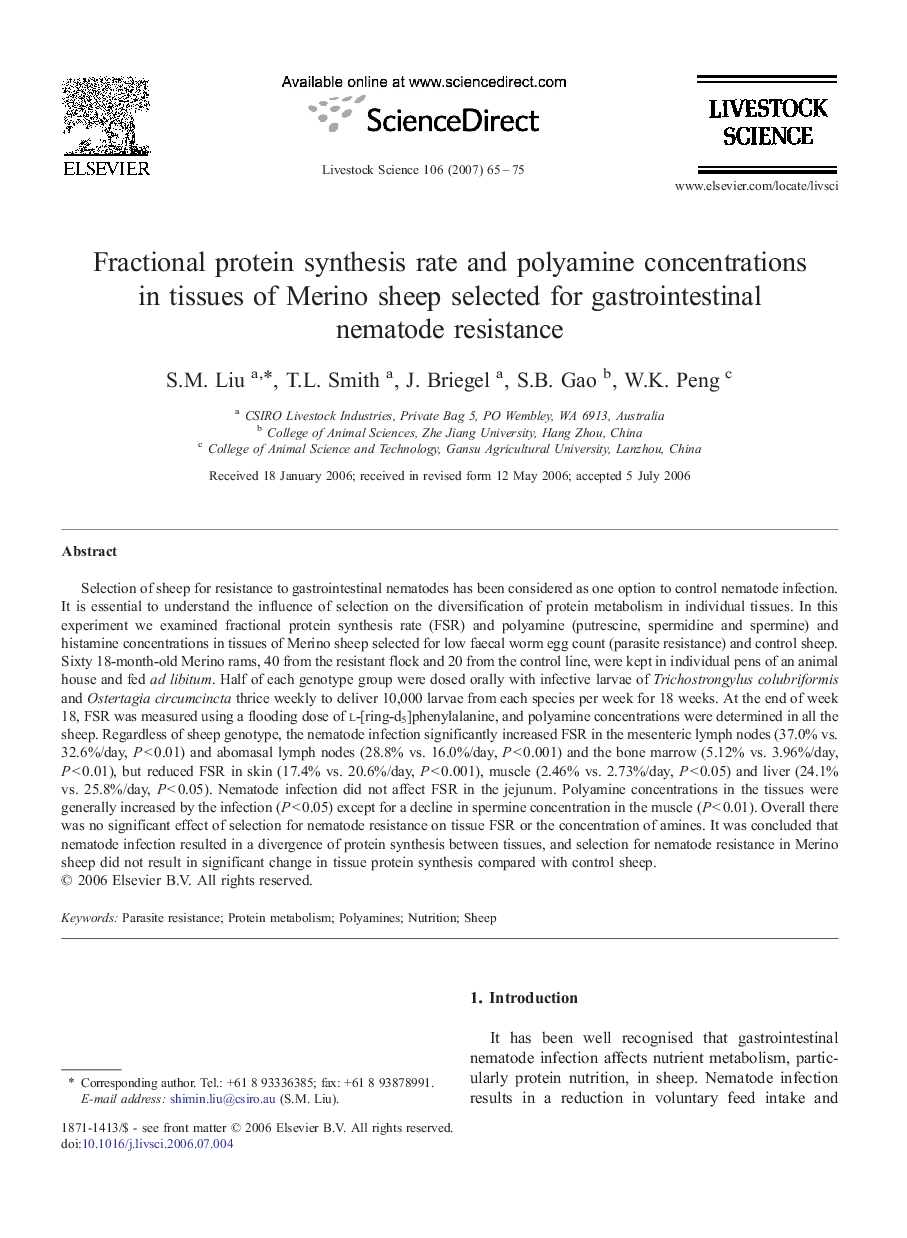| Article ID | Journal | Published Year | Pages | File Type |
|---|---|---|---|---|
| 2449139 | Livestock Science | 2007 | 11 Pages |
Selection of sheep for resistance to gastrointestinal nematodes has been considered as one option to control nematode infection. It is essential to understand the influence of selection on the diversification of protein metabolism in individual tissues. In this experiment we examined fractional protein synthesis rate (FSR) and polyamine (putrescine, spermidine and spermine) and histamine concentrations in tissues of Merino sheep selected for low faecal worm egg count (parasite resistance) and control sheep. Sixty 18-month-old Merino rams, 40 from the resistant flock and 20 from the control line, were kept in individual pens of an animal house and fed ad libitum. Half of each genotype group were dosed orally with infective larvae of Trichostrongylus colubriformis and Ostertagia circumcincta thrice weekly to deliver 10,000 larvae from each species per week for 18 weeks. At the end of week 18, FSR was measured using a flooding dose of l-[ring-d5]phenylalanine, and polyamine concentrations were determined in all the sheep. Regardless of sheep genotype, the nematode infection significantly increased FSR in the mesenteric lymph nodes (37.0% vs. 32.6%/day, P < 0.01) and abomasal lymph nodes (28.8% vs. 16.0%/day, P < 0.001) and the bone marrow (5.12% vs. 3.96%/day, P < 0.01), but reduced FSR in skin (17.4% vs. 20.6%/day, P < 0.001), muscle (2.46% vs. 2.73%/day, P < 0.05) and liver (24.1% vs. 25.8%/day, P < 0.05). Nematode infection did not affect FSR in the jejunum. Polyamine concentrations in the tissues were generally increased by the infection (P < 0.05) except for a decline in spermine concentration in the muscle (P < 0.01). Overall there was no significant effect of selection for nematode resistance on tissue FSR or the concentration of amines. It was concluded that nematode infection resulted in a divergence of protein synthesis between tissues, and selection for nematode resistance in Merino sheep did not result in significant change in tissue protein synthesis compared with control sheep.
